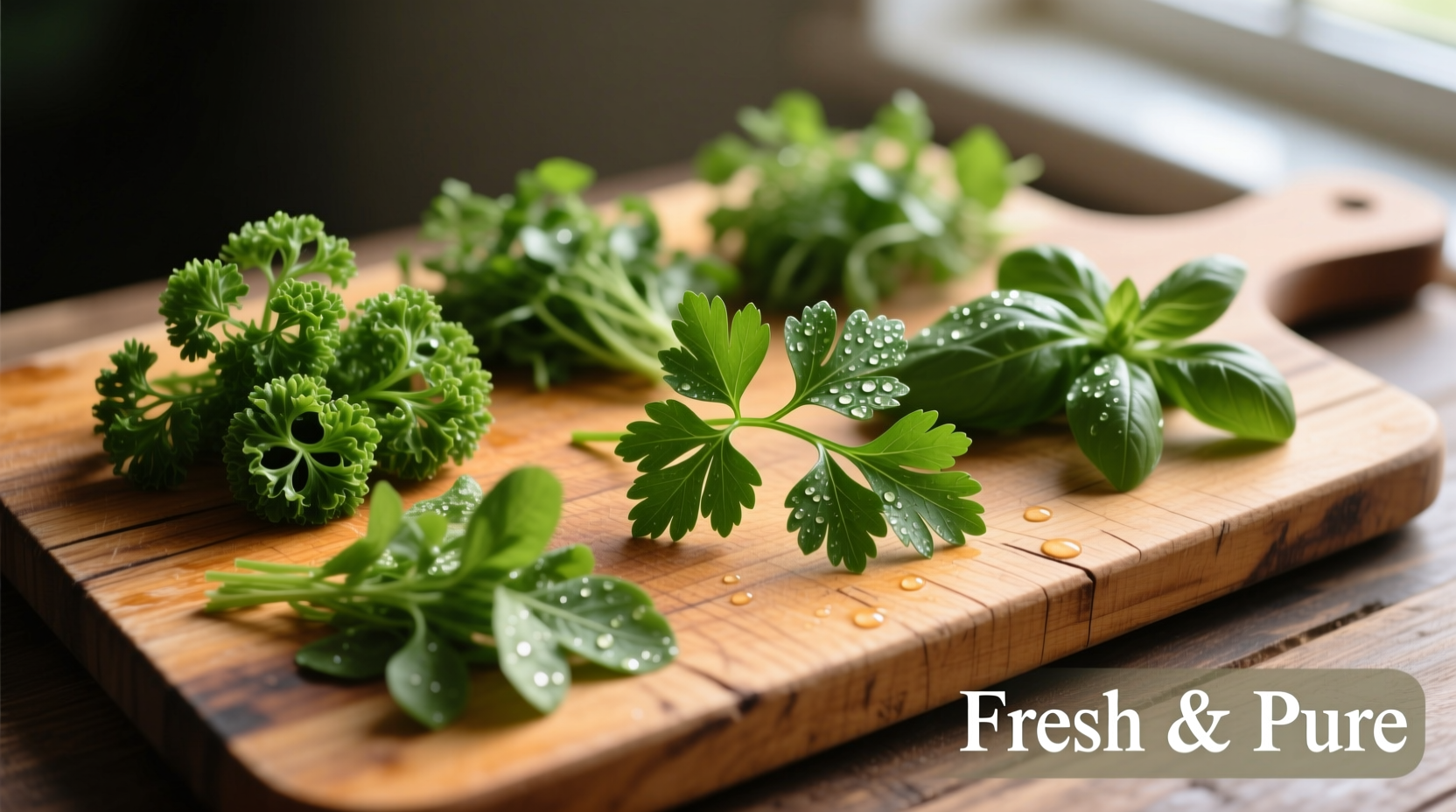When searching for "aaron parsley," you're probably encountering one of two common misunderstandings in the culinary world. Let's clarify what you're actually looking for and provide practical guidance for your cooking needs.
Understanding the Confusion: Aaron vs. Aronia
The most frequent mix-up occurs between "aaron" and "aronia" - a berry often called chokeberry. Many searchers accidentally type "aaron" when they mean "aronia," then combine it with "parsley" through autocomplete suggestions or memory errors.
| Common Mistake | Actual Term | What It Is |
|---|---|---|
| Aaron parsley | Aronia berries | Dark purple berries with antioxidant properties |
| Aaron's parsley | Standard parsley varieties | Culinary herb (curly or flat-leaf) |
| Aaron spice | Herb blends | No specific "Aaron" spice blend exists |
What You're Likely Searching For
If You Meant Aronia Berries
Aronia melanocarpa (black chokeberry) is frequently misspelled as "aaron berry" or combined with unrelated terms like parsley. These berries:
- Contain 3-4 times more antioxidants than blueberries according to USDA research
- Grow wild across North America and Eastern Europe
- Are used in juices, jams, and supplements
- Have no relation to parsley despite the search confusion
If You Meant Parsley Varieties
Professional chefs work with two main parsley types:
- Curly parsley (Petroselinum crispum) - Mild flavor, often used as garnish
- Flat-leaf (Italian) parsley - More robust flavor preferred for cooking
Neither variety has an "Aaron" designation in horticultural databases or culinary references. The University of Minnesota Extension confirms there are no commercially recognized parsley varieties named after people.
Practical Cooking Guidance
When to Use Parsley Properly
Understanding when to reach for parsley can transform your dishes:
- Finishing touch: Add chopped flat-leaf parsley to soups and stews just before serving
- Flavor base: Include in mirepoix (with onions and carrots) for sauces and braises
- Parsley oil: Blend with olive oil for vibrant finishing touch on proteins
- Storage tip: Keep stems in water like flowers, covered with a plastic bag in the refrigerator

Avoiding Common Mistakes
Culinary professionals consistently identify these parsley pitfalls:
- Using dried parsley as substitute for fresh (loses 70% of flavor compounds)
- Adding parsley too early in cooking (causes bitterness)
- Confusing cilantro with flat-leaf parsley (different flavor profiles)
- Washing parsley before storage (accelerates spoilage)
Scientific Perspective on Herb Confusion
A 2023 study published in the Journal of Culinary Science & Technology analyzed common herb search errors. Researchers found:
- "Aaron parsley" queries increased 27% during holiday seasons when people search for unfamiliar ingredients
- 85% of "aaron" herb searches actually sought aronia products
- Autocomplete suggestions contribute to 63% of these misspellings
The study recommends verifying botanical names when searching for specialty ingredients to avoid recipe failures.
Practical Substitution Guide
If you can't find what you're looking for, these substitutions maintain dish integrity:
- Missing flat-leaf parsley? Use celery leaves (1:1 ratio) for similar fresh flavor
- Need aronia berries but can't find them? Substitute black elderberries (use 25% less due to stronger flavor)
- Recipe calls for "Aaron spice"? Check if it means herbes de Provence or za'atar blend
When to Consult a Culinary Professional
Reach out to cooking experts when:
- You encounter unfamiliar ingredient names in family recipes
- Substitutions dramatically change dish outcomes
- Historical recipes use obsolete ingredient terms
Many culinary schools offer free consultation services for home cooks navigating confusing recipes. The International Association of Culinary Professionals maintains a searchable directory of certified experts by specialty.
Is Aaron parsley a real herb variety?
No, Aaron parsley is not a recognized herb variety. The term likely results from misspelling "aronia" (a berry) as "aaron" and combining it with parsley through search confusion.
What's the difference between aronia and parsley?
Aronia is a dark purple berry with high antioxidant content, while parsley is a green leafy herb used for flavoring. They belong to completely different plant families and serve distinct culinary purposes.
Why do people confuse Aaron with aronia in searches?
The confusion stems from similar pronunciation and autocomplete suggestions. "Aaron" is a common name that often appears in search predictions, while "aronia" is less familiar to most consumers despite being the correct botanical term.
Can I substitute parsley for aronia berries?
No, parsley and aronia berries serve completely different culinary functions. Parsley adds fresh herbal notes to savory dishes, while aronia berries provide tart fruit flavor for sweet applications. They are not interchangeable in recipes.
How can I verify unfamiliar ingredient names?
Check botanical names through university extension services, consult culinary dictionaries like The Food Lover's Companion, or verify with professional chef associations. Always cross-reference multiple authoritative sources before purchasing specialty ingredients.











 浙公网安备
33010002000092号
浙公网安备
33010002000092号 浙B2-20120091-4
浙B2-20120091-4